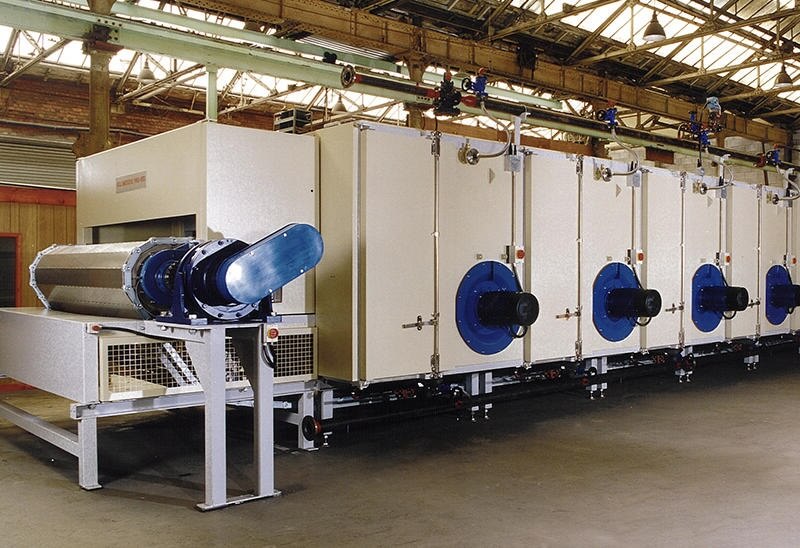-












Blog Detail
When liquid stability is insufficient, storage requirements are too severe or a solid form of the product is sought, freeze-drying is commonly accepted as the optimum approach for preserving pharmaceutical formulations.
Despite being relatively new to the business spray drying has several advantages, such as the capacity to operate at a greater throughput.
The Drying Method
The freeze-drying technique is first freezing a product, generally in a controlled manner to change the ice crystal structure, then placing it in a vacuum. At this step, sublimation, or primary drying, occurs to eliminate the unbound water.
Secondary drying is then performed to sublime the bound water, reducing the material to a user-defined residual moisture level. Because the target is bound rather than unbound at this step more energy is required to drive the process.
This is related to the process of increasing shelf temperatures to +20 in conjunction with low air pressure. The goal is to convert ice straight into water vapor without passing through the liquid phase.
The balance of temperature and vacuum enables a good batch after trying certain items may require freeze-drying temperatures ranging from 12 hours to five days to achieve this.
Although less costly than freeze drying, high processing temperatures and shear force are disadvantages
Advantages of Spray Drying
Maintain Food’s Flavor, Color, And Nutrients
Spray drying is frequently the final stage of the production process. Continuous spraying, mixing, and drying are used to convert the item from liquid to powder. Among the different food storage systems spray drying has distinct advantages. Because the temperature employed by this technique is not extremely high, it may efficiently keep the flavor, color, and nutrients of food while eradicating microbial contamination,
After The Size, Shape, And Density of a Material in Order to Increase Its Quality
Typically, industrial spray dryers are used to remove moisture from raw materials. It also has many additional applications, such as modifying the size, shape, or density of the material, assisting in the inclusion of other components in the manufacturing process, and assisting in the manufacture of the highest quality goods.
Lower The Weight of the Meal and Make It Easier to Carry or Transport
Fruit and vegetable powder produced by spray-drying can keep the nutrients of fresh fruits and vegetables while reducing volume by 70% making it easier to eat and transport.
Eliminate Certain Foods’ Toxicity
Toxins are removed from some plants by heating them to a specific temperature. The spray drying method is appropriate for these plants. Using soybeans as an example, the concentration procedure necessitates a specific temperature in order to eliminate a component known as trypsin inhibitors.
Advantages of Freeze Drying
Maintain The Biological Viability Of Substances
Because freeze-drying is done at low temperatures, it is ideal for many heat-sensitive compounds such as proteins and bacteria. These compounds will not be denatured or lose their biological potency.
Just A Minor Loss Of Volatile Components
The loss of some volatile components in the material is relatively minor while drying at low temperatures, making it acceptable for drying various chemical items.medications.and foods.
Maintain The Original Characters
Because the development of microbes and the activity of enzymes cannot occur during the freeze-drying process, the original characteristics can be preserved.
Lengthy Storage Life
Freeze drying may eliminate more than 95-99 percent of the water from a product, allowing it to be kept for an extended period of time without degradation.
Reserve The Volume and Structure
Because it is dried in a frozen condition, the volume is practically unaltered the original structure is preserved, and concentration does not occur.
Principle of Operation
Under a high vacuum, freezing water-containing materials below the freezing point, converting water into ice and subsequently turning ice into steam. Before drying the material can be frozen in the freezing equipment can, however, be frozen directly in the drying chamber by rapidly pulling into a vacuum. A condenser removes the water vapor produced by sublimation thermal radiation is commonly used to provide the heat of vaporization necessary in the sublimation process.
Conclusion
Spray drying and freeze-drying are utilized in a variety of applications there is no definitive answer as to which is superior. As previously said spray drying is appropriate for plants that require high temperatures to eliminate toxicity, however, there are other plants whose nutrients would be lost owing to high temperatures. A vacuum freeze drying machine is better suited for these plants.
Recent Posts
- The Crucial Role of Metal Balers in Scrap Car Recycling Industry
- Tips for Properly Loading and Securing Vehicles on Car Trailers
- Enhancing Your Driving Experience: The Benefits of Reed Diffusers for Automotive Use
- Enhancing Automotive Performance with PEEK Seals
- The Application of PTFE Film on Auto Parts
Popular Posts
-

Freeze Drying Vs. Spray Drying
April 15, 2022
-

How To Choose A Suitable Board Game for Family?
April 17, 2022
-

The Application of PTFE Film on Auto Parts
May 11, 2023
-

Enhancing Automotive Performance with PEEK Seals
December 15, 2023
-

Categories
Before you place an order, please contact with us to confirm the shipping fee! Dismiss
30 items, $1,034.90

 2016 Honda Accord Front Grille Replacement
2016 Honda Accord Front Grille Replacement
 2011 Honda Accord Front Grille Replacement
2011 Honda Accord Front Grille Replacement






